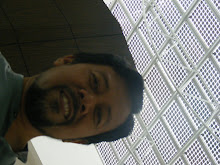Abstract
Building aesthetic, thermal and noise reductions as well as wind protection are the main reasons to use Double Skin Facade (DSF) in modern high rise office buildings. Previous researchers have suggested that the risk of overheating within (DSF) envelope is high in tropical climate. However, some recent studies (Hien, 2004 and Wong P.C., 2008) have proved that DSF improve thermal comfort in highrise building in the tropics. This research aims to analyse the effect of DSF glazing material, DSF cavity depth and combination of DSF together with thermal wall strategies on lowering solar heat gains in DSF office building in tropical climate of Malaysia. The study has been carried out by simulations and mathematical model. The simulation process contains two parts. First, Airpak software simulation as a pilot test and aims to evaluate DSF configurations in different orientations and different solar times. Second, whole building simulation by both Airpak and Flovent softwares. The whole building simulation focuses on investigating the effect of different DSF configurations in particular solar time and building orientation. Results of this study found that DSF is not able to reduce solar gains in West and East orientations. On average, 11% of reduction in rooms temperature was obtained in both South and North orientations, as compared to Single Skin Façade (SSF). This amount is equivalent to 3°C reduction in indoor rooms temperature. The optimum reduction of heat gains was found in the case of DSF with air-gap size of 1.0 m comparing to those with air-gap sizes of more or less than 1.0 m. This study also found that reflective glazing is the most effective material of which it is able to reduce room temperature by 2°C on average. Lastly, different configurations of thermal wall are tested, however, the results do not show significant improvement in DSF performance.
Paper published in Conference & Journals;
- Assoc. Prof. Dr. Mohd Zin Kandar, Behzad Rehmani “The Future of Double Skin Façade Design and Installation inMalaysia’s Building Industry In View To Support Malaysia’s Green Building Index Program.”, International Conference on Construction Industry, Padang Sumatera, August 2009.
- Behzad Rahmani, Mohd Zin Kandar and Parisa Rahmani; How Double Skin Façade’s Air-Gap Sizes Effect on Lowering Solar Heat Gain in Tropical Climate?. World Applied Sciences Journal 18 (6): 774-778, 2012.





















No comments:
Post a Comment